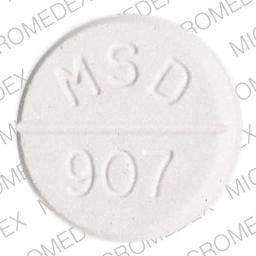Thiabendazole and Alcohol/Food Interactions
There are 2 alcohol/food/lifestyle interactions with thiabendazole.
Thiabendazole Caffeine
Moderate Drug Interaction
MONITOR: Coadministration with thiabendazole may increase the plasma concentrations of caffeine. The mechanism is thiabendazole inhibition of the CYP450 1A2 metabolism of caffeine. In ten healthy, nonsmoking volunteers, administration of a single 136.5 mg dose of caffeine in combination with a single 500 mg dose of thiabendazole resulted in a nearly 60% increase in the area under the plasma concentration-time curve (AUC) of caffeine compared to administration without thiabendazole. In addition, the half-life of caffeine was increased from 11.9 to 28.6 hours, and oral clearance was reduced by 67% during coadministration with thiabendazole. The formation of paraxanthine from caffeine, which is primarily mediated by CYP450 1A2, was almost completely abolished until after the thiabendazole was cleared from the system.
MANAGEMENT: Patients should be advised that pharmacologic effects of caffeine may be increased during coadministration with thiabendazole.
References (1)
- Bapiro TE, Sayi J, Hasler JA, et al. (2005) "Artemisinin and thiabendazole are potent inhibitors of cytochrome P450 1A2 (CYP1A2) activity in humans." Eur J Clin Pharmacol, 61, p. 755-61
Thiabendazole Nicotine
Moderate Drug Interaction
MONITOR: Smoking cessation may lead to elevated plasma concentrations and enhanced pharmacologic effects of drugs that are substrates of CYP450 1A2 (and possibly CYP450 1A1) and/or certain drugs with a narrow therapeutic index (e.g., flecainide, pentazocine). One proposed mechanism is related to the loss of CYP450 1A2 and 1A1 induction by polycyclic aromatic hydrocarbons in tobacco smoke; when smoking cessation agents are initiated and smoking stops, the metabolism of certain drugs may decrease leading to increased plasma concentrations. The mechanism by which smoking cessation affects narrow therapeutic index drugs that are not known substrates of CYP450 1A2 or 1A1 is unknown. The clinical significance of this interaction is unknown as clinical data are lacking.
MANAGEMENT: Until more information is available, caution is advisable if smoking cessation agents are used concomitantly with drugs that are substrates of CYP450 1A2 or 1A1 and/or those with a narrow therapeutic range. Patients receiving smoking cessation agents may require periodic dose adjustments and closer clinical and laboratory monitoring of medications that are substrates of CYP450 1A2 or 1A1.
References (4)
- (2024) "Product Information. Cytisine (cytisinicline)." Consilient Health Ltd
- jeong sh, Newcombe D, sheridan j, Tingle M (2015) "Pharmacokinetics of cytisine, an a4 b2 nicotinic receptor partial agonist, in healthy smokers following a single dose." Drug Test Anal, 7, p. 475-82
- Vaughan DP, Beckett AH, Robbie DS (1976) "The influence of smoking on the intersubject variation in pentazocine elimination." Br J Clin Pharmacol, 3, p. 279-83
- Zevin S, Benowitz NL (1999) "Drug interactions with tobacco smoking: an update" Clin Pharmacokinet, 36, p. 425-38
Switch to consumer interaction data
Thiabendazole drug interactions
There are 57 drug interactions with thiabendazole.
Thiabendazole disease interactions
There are 3 disease interactions with thiabendazole which include:
More about thiabendazole
- Check interactions
- Compare alternatives
- Side effects
- Dosage information
- During pregnancy
- Drug class: anthelmintics
Related treatment guides
Drug Interaction Classification
| Highly clinically significant. Avoid combinations; the risk of the interaction outweighs the benefit. | |
| Moderately clinically significant. Usually avoid combinations; use it only under special circumstances. | |
| Minimally clinically significant. Minimize risk; assess risk and consider an alternative drug, take steps to circumvent the interaction risk and/or institute a monitoring plan. | |
| No interaction information available. |
See also:
Further information
Always consult your healthcare provider to ensure the information displayed on this page applies to your personal circumstances.


